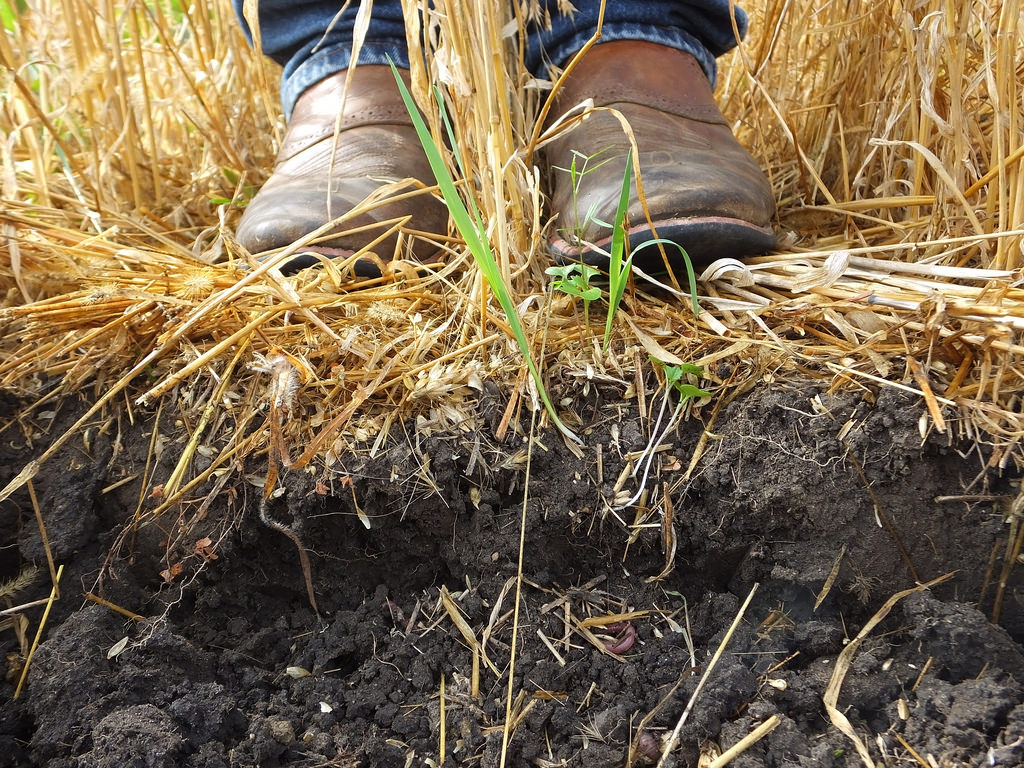Dirt First
Author: Kristin Ohlson
Rick Haney, gangly and garrulous, paces in front of a congregation of government conservationists, working the room for laughs before he gets to the hard data. The U.S. Department of Agriculture soil scientist points to an aerial photograph of research plots outside his facility in Temple , Texas. “Our drones took this shot,” he says, then shakes his head. “Kidding. We don’t have any drones.”
Forty sets of shoulders jerk in amusement. Paranoia about the federal government is acute in Texas, and Haney’s audience—field educators from the USDA’s Natural Resources Conservation Service (NRCS), part of a corps of around six thousand that works directly with farmers nationwide—hail from around the state. They’re used to suspicious scowls from farmers, who are as skeptical of the feds as they are of the outsiders who dwell on the downsides of agriculture. For the most part, the people in this room are both: feds and outsiders.
But what if those downsides—unsustainable farming practices—are also bad for a farmer’s bottom line? It’s the question Haney loves to raise during training sessions like this one, which the NRCS (today’s iteration of the Dust Bowl–era Soil Conservation Service) convenes around the country as part of a soil health campaign launched in 2012. Haney is a star at these events because he brings the imprimatur of science to something many innovative farmers have already discovered: despite what the million-dollar marketing campaigns of agrichemical companies say, farmers can use less fertilizer without reducing yields, saving both money and landscapes.
“Our entire agriculture industry is based on chemical inputs, but soil is not a chemistry set,” Haney explains. “It’s a biological system. We’ve treated it like a chemistry set because the chemistry is easier to measure than the soil biology.”
In nature, of course, plants grow like mad without added synthetic fertilizer, thanks to a multimillion-year-old partnership with soil microorganisms. Plants pull carbon dioxide from the atmosphere through photosynthesis and create a carbon syrup. About 60 percent of this fuels the plant’s growth, with the remaining exuded through the roots to soil microorganisms, which trade mineral nutrients they’ve liberated from rocks, sand, silt, and clay—in other words, fertilizer—for their share of the carbon bounty. Haney insists that ag scientists are remiss if they don’t pay more attention to this natural partnership.
“I’ve had scientific colleagues tell me they raised 300 bushels of corn [per acre] with an application of fertilizer, and I ask how the control plots, the ones without the fertilizer, did,” Haney says. “They tell me 220 bushels of corn. How is that not the story? How is raising 220 bushels of corn without fertilizer not the story?” If the natural processes at work in even the tired soil of a test plot can produce 220 bushels of corn, he argues, the yields of farmers consciously building soil health can be much higher.

